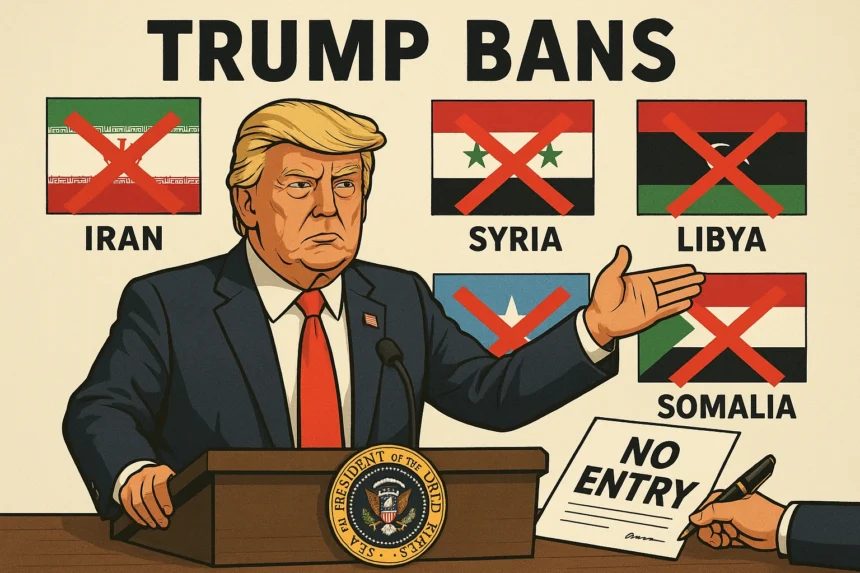U.S. President Donald Trump has reignited global immigration debates with a sweeping new executive order, imposing a full travel ban on 12 countries and restricting travelers from seven others. The White House confirmed the directive will take effect Monday, with Trump calling it a “necessary step to safeguard America’s national security.”
🔒 Countries Under Full Ban:
-
Afghanistan
-
Chad
-
Congo
-
Equatorial Guinea
-
Eritrea
-
Haiti
-
Iran
-
Libya
-
Myanmar
-
Somalia
-
Sudan
-
Yemen
⚠️ Countries Facing Travel Restrictions:
-
Burundi
-
Cuba
-
Laos
-
Sierra Leone
-
Togo
-
Turkmenistan
-
Venezuela
“We will not allow people to enter our country who wish to do us harm,” Trump said in a White House address. “We cannot have open migration from countries where we cannot safely and reliably vet applicants.”
The announcement comes in the wake of a violent attack during a pro-Israel rally in Boulder, Colorado, which Trump said highlights the dangers posed by “poorly vetted foreign nationals.”
He added, “We will not let what happened in Europe happen to America.”
🔙 A Return to a Familiar Policy
The decision draws comparisons to Trump’s 2017 travel ban targeting Muslim-majority nations—a policy that sparked legal challenges, protests, and global criticism. That version, after multiple revisions, was eventually upheld by the U.S. Supreme Court in 2018.
This renewed ban, however, is broader in scope and includes non-Muslim countries, suggesting an expansion in both criteria and coverage.
Critics are already raising concerns about potential human rights implications and discrimination, while supporters argue it is a decisive action to prevent foreign threats amid increasing global unrest.














